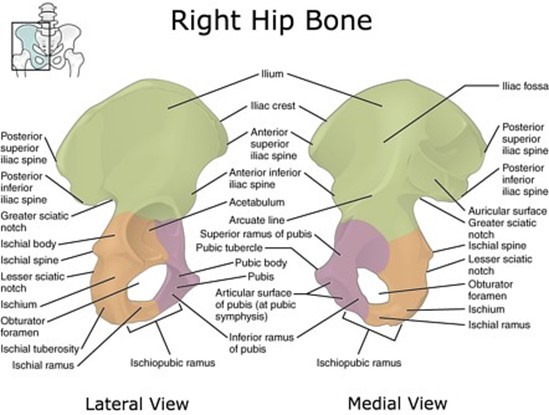In which type of vertebrae do we find transverse foramen?
Cervical Vertebrae.
Lumbar Vertebrae.
Thoracic Vertebrae.
Sacral vertebrae.
The Correct Answer is A
The cervical vertebrae are the only vertebrae that have transverse foramina, which are openings in the transverse processes that allow the passage of the vertebral arteries and veins.
Choice B is incorrect because lumbar vertebrae do not have transverse foramina.
They have large bodies and short, thick transverse processes that serve as attachment sites for muscles.
Choice C is incorrect because thoracic vertebrae do not have transverse foramina.
They have costal facets on their transverse processes that articulate with the tubercles of the ribs.
Choice D is incorrect because sacral vertebrae do not have transverse foramina.
They are fused together to form the sacrum, which has four pairs of sacral foramina on each side that transmit sacral nerves and vessels.
Nursing Test Bank
Naxlex Comprehensive Predictor Exams
Related Questions
Correct Answer is ["obturator foramen"]
Explanation

The obturator foramen is a large opening in the pelvis that is formed by the ischium and pubis bones.
It is located in the lower part of the pelvis, below the acetabulum (the socket of the hip joint).
The obturator foramen is covered by the obturator membrane, which separates the pelvic cavity from the thigh.
Several important structures pass through or around the obturator foramen, including the obturator nerve, artery, and vein.
Injuries to the obturator nerve can result in weakness or paralysis of the muscles of the inner thigh, while injuries to the obturator artery and vein can result in severe bleeding and require immediate medical attention.
Correct Answer is B
Explanation
The ethmoid bone is a part of the axial skeleton, not the appendicular skeleton.
The axial skeleton consists of the bones of the skull, vertebral column, ribs, and sternum.
Choice A is incorrect because the ulna is a part of the upper limb, which is supported by the pectoral girdle.
Choice C is incorrect because the ilium is a part of the hip bone, which forms the pelvic girdle.
Choice D is incorrect because the patella is a part of the lower limb, which is supported by the pelvic girdle.
Whether you are a student looking to ace your exams or a practicing nurse seeking to enhance your expertise , our nursing education contents will empower you with the confidence and competence to make a difference in the lives of patients and become a respected leader in the healthcare field.
Visit Naxlex, invest in your future and unlock endless possibilities with our unparalleled nursing education contents today
Report Wrong Answer on the Current Question
Do you disagree with the answer? If yes, what is your expected answer? Explain.
Kindly be descriptive with the issue you are facing.
